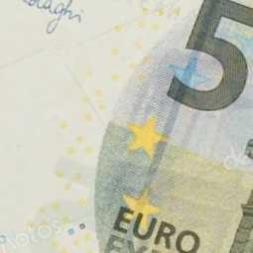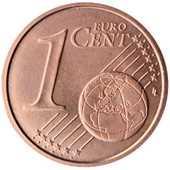Figures
The euro helps to keep prices stable
Since its creation, the euro has kept its value well. The ECB is responsible for maintaining price stability by aiming for an inflation rate of 2% over the medium-term. Average inflation from 1999 to 2023 (September) has been 2.08%.
Source: AMECO database
The euro is a leading international currency
The proportion of international payments made in euro and US dollars is roughly equal and the euro is the world’s second favourite currency for borrowing, lending and central bank reserves. The majority of global green bond issuance is denominated in euro. The European Green Bond Standard ensures environmentally sustainable loans as one of the main instruments to finance investments in green technologies, energy and resource efficiency, sustainable transport and research infrastructures.
Source: Bloomberg and ECB. Cut-off date 24 November 2023.
Stable and strong support for the euro
Currently close to four out of five (79%) citizens of euro area countries believe that the euro is good for the EU. On 1 January 2023, Croatia became the 20th EU Member State to adopt the euro.
Source: Eurobarometer, autumn 2023.
The euro helps promote trade within Europe and beyond
The stability of the euro makes it attractive for businesses around the world trading with Europe to accept prices quoted in euros. This saves European businesses from the costs of currency movements and of converting into other currencies. It also makes it much easier and cheaper for countries using the euro to trade with each other. In 2022, 59% of extra-euro area exports of goods were invoiced in euro.
Source: ECB
Living standards and employment have risen significantly under the euro
Since the euro was introduced in 1999, the average income in the euro area (EA20) has risen from €20 700 to €38 800 (2022). The percentage of people working has risen from 65.8% (2001) to 74.6% (2022).
Source: AMECO database
The euro has protected euro area economies from exchange rate volatility
The euro has eliminated the costs of currency movements within the euro area and protected European consumers and businesses from costly swings in currency markets, which used to undermine confidence, discourage investment and cause economic instability.
The name ‘euro’ was agreed at the 1995 European Council meeting in Madrid as part of the preparations for the single currency. The euro symbol – € – was inspired by the Greek letter epsilon (Є), a reference to the cradle of European civilisation.
It also stands for the first letter of the word ‘Europe’ in the Latin alphabet, while the two parallel lines running through the symbol signify stability.

Banknotes
The design of the euro banknotes is based on the different architectural styles that have emerged throughout Europe’s history and have marked its culture. On the front of the banknotes, windows and doorways symbolise the European spirit of openness and cooperation. On the back, bridges symbolise communication between the people of Europe and between Europe and the rest of the world.
The styles shown are:
- €5: Classical
- €10: Romanesque
- €20: Gothic
- €50: Renaissance
- €100: Baroque and rococo
- €200: 19th century iron & glass architecture
Coins
The euro coins have a common side and a national side. The national sides indicate the issuing country, whereas the common sides show images of the European Union or of Europe and symbolise the unity of the EU. The 5, 2 and 1 cent coins show Europe in relation to Africa and Asia.
The common sides of the euro coins are:
Use in other territories
In addition to the euro area, the euro is also the currency of some non-EU countries:
- Andorra
- Monaco
- San Marino
- Vatican City State
- Kosovo (This designation is without prejudice to positions on status and is in line with UNSCR 1244/1999 and the ICJ Opinion on the Kosovo declaration of independence.)
- Montenegro
The euro is also used in territories outside the European continent:
- Azores and Madeira (Portugal)
- Canary Islands (Spain)
- Ceuta and Melilla (Spain)
- French Guyana
- French islands in the Caribbean
- Mayotte and Réunion (France)
- Saint Pierre and Miquelon (France)















